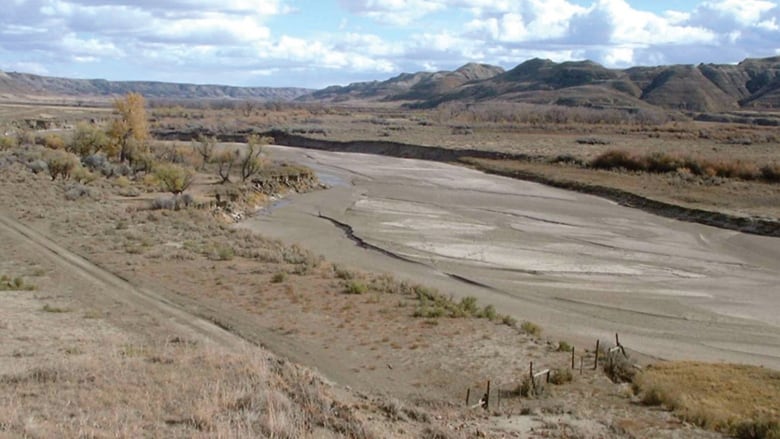Looming Water Shortages in Southern Alberta: The Need for Water Restrictions
Over a number of years now, 20 or so, I’ve attended numerous seminars and science workshops on water, and have been hyper aware of conditions in southern Alberta. Topics ranged from water levels to flora and fauna,wetlands, and riparian areas. In February I attended a symposium, at the Cochrane Ranchehouse, on the threat of water shortages becoming increasingly dire in southern Alberta. Recent presentations at the Bow River Basin Council (BRBC) water symposium highlighted critical concerns and provided a detailed overview of the situation, three of the speakers presentations are included here. Experts emphasized the importance of immediate and effective water management strategies, particularly the implementation of water restrictions. Here, we explore the key insights from the symposium and discuss the Government of Alberta’s five levels of water restrictions that municipalities must adopt. Pay particular attention to the description of their level 5 classification, and the included emergence measures.
Current Water Challenges in Southern Alberta
Southern Alberta faces significant water management challenges due to a combination of factors:
- Climate Change and Reduced Snowpack: Darren Bourget from the Government of Alberta pointed out that climate change is leading to reduced snowpacks in the Rockies, which are crucial for replenishing river systems during spring and summer. This reduction directly impacts the flow rates of rivers and the availability of water during critical periods.
- Increased Demand: Claire Jackson from WaterSMART highlighted that population growth and agricultural expansion are driving up water demand. As urban areas and farms expand, the pressure on existing water supplies intensifies, making efficient water use more crucial than ever.
- Ecological Impacts: Lesley Peterson from Trout Unlimited Canada discussed the ecological consequences of water shortages, including the degradation of aquatic habitats and the adverse effects on fish populations. Healthy river ecosystems are vital for maintaining biodiversity and ensuring sustainable water quality.
The Five Levels of Water Restrictions
The Government of Alberta has developed a structured approach to managing water use during drought conditions, comprising five levels of water restrictions. These levels provide a framework for municipalities to follow, ensuring a coordinated response to water scarcity.
- Level 1 – Awareness and Voluntary Reduction:
- Key Actions: Public education campaigns to raise awareness about water conservation. Encouragement of voluntary reductions in water use by households and businesses.
- Expected Outcome: A modest reduction in water consumption through increased public awareness and voluntary measures.
- Level 2 – Moderate Restrictions:
- Key Actions: Implementation of moderate restrictions such as limiting lawn watering, washing vehicles, and filling pools. Promoting water-saving technologies and practices.
- Expected Outcome: A noticeable reduction in water use as people adopt more efficient water practices.
- Level 3 – Severe Restrictions:
- Key Actions: Prohibition of non-essential water uses, including banning lawn watering and car washing. Enforcement of stricter regulations on industrial and agricultural water use.
- Expected Outcome: Significant reductions in water consumption, prioritizing essential uses and protecting water reserves.
- Level 4 – Critical Restrictions:
- Key Actions: Severe limitations on all non-essential water uses. Restrictions on water-intensive industries and further reductions in agricultural water allocation.
- Expected Outcome: Major cuts in water usage to preserve supplies for critical needs such as drinking water and essential services.
- Level 5 – Emergency Measures:
- Key Actions: Implementation of emergency water measures, including potential rationing. Emergency distribution of water for critical needs.
- Expected Outcome: Ensuring that the most essential water needs are met during extreme shortages, with strict controls on all other uses.
Moving Forward: Community Involvement and Sustainable Practices
Addressing the looming water shortages in southern Alberta requires a collaborative effort between government agencies, municipalities, industries, and residents. Here are some steps that can be taken:
- Community Engagement: Increasing community involvement in water conservation initiatives through education and outreach programs. Encouraging residents to participate in water-saving activities and to support local water management policies.
- Technological Innovations: Promoting the use of water-efficient technologies in households, businesses, and agriculture. Innovations such as drip irrigation, grey-water recycling, and smart water meters can significantly reduce water consumption. Presently in Alberta, use of grey-water is prohibited.
- Sustainable Practices: Encouraging sustainable land and water management practices that enhance the natural water cycle. This includes protecting wetlands, promoting soil health, and implementing conservation tillage in agriculture.
- Policy and Planning: Developing and enforcing policies that support long-term water sustainability. This includes integrating water management into urban planning and ensuring that new developments are designed with water efficiency in mind.
The insights from the BRBC water symposium underscore the urgency of addressing water shortages through proactive measures. By adopting the Government of Alberta’s water restrictions and embracing sustainable practices, southern Alberta can navigate these challenges and ensure a secure water future for its communities.

